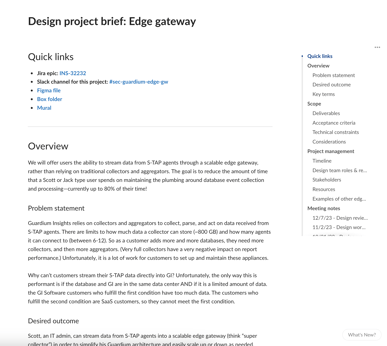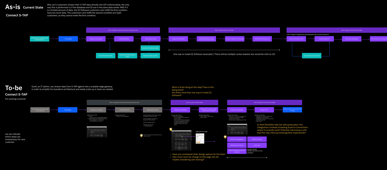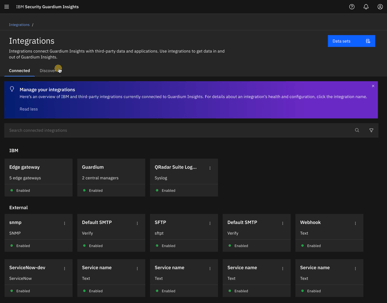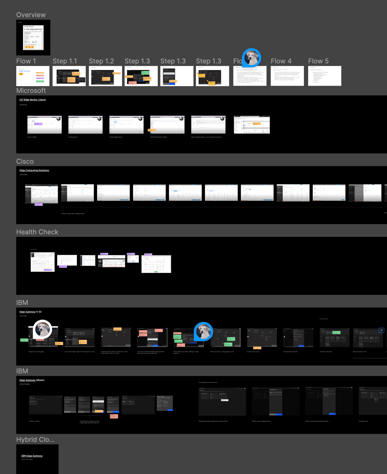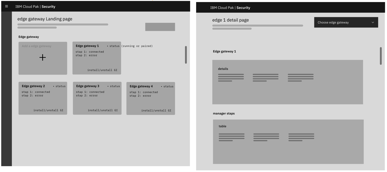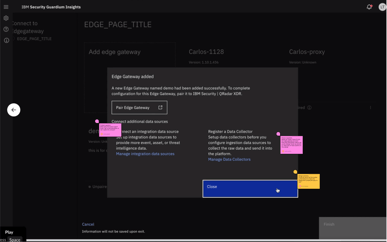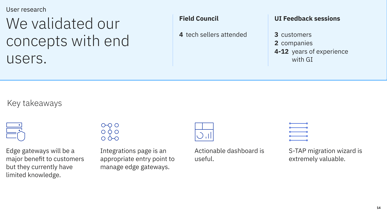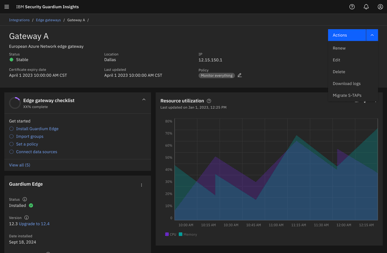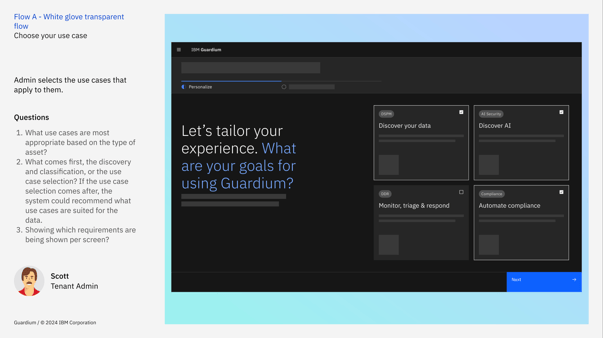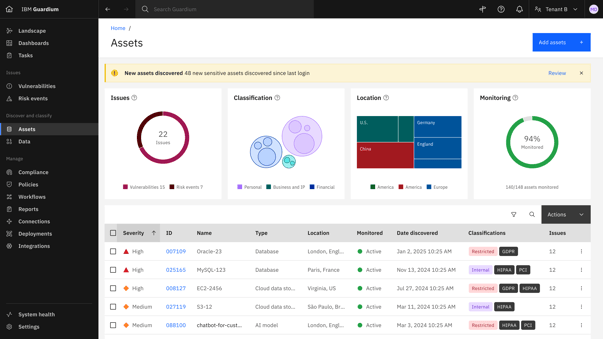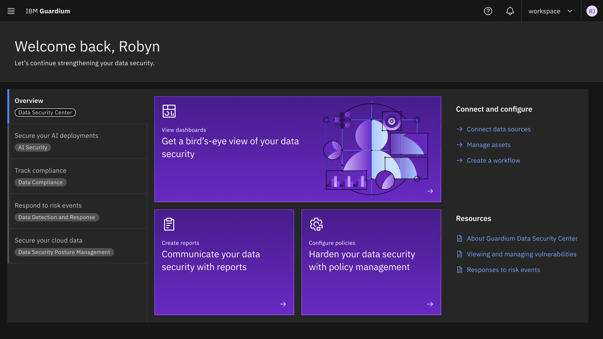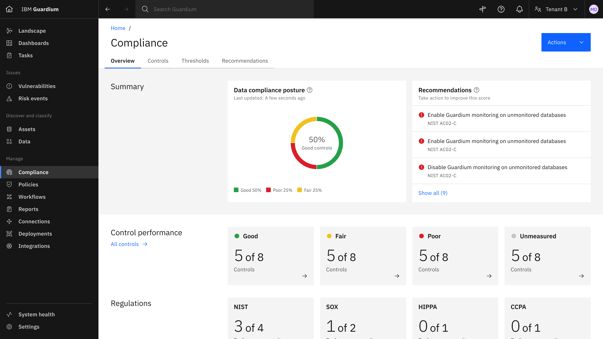About the program
My responsibilities
Design strategy & vision
Maintaining design roadmap
Stakeholder alignment & planning
Staffing design projects
Successful delivery of design outcomes
Empowering design leads & squads
Managing direct reports
As the Design Program Director of IBM's Data Security portfolio, I lead a team of 50 designers and researchers, driving high-impact design solutions that align with business priorities. I directly manage 11 leaders, including four managers, fostering a strong, scalable design organization. Under my leadership, the team has delivered successful outcomes on many high-priority initiatives, enhancing user experience and business value.
IBM Data Security
Design Program
My team
1 program director (me)
5 managers
34 designers
11 researchers
Key outcomes
Scaled the design team from 4 to 60 members in 15 months, enabling the organization to support rapid product growth and innovation.
Strengthened cross-functional alignment with product management and engineering, ensuring designers focused on the highest-impact problems.
Established a customer feedback program with 20+ real customers, embedding continuous feedback into our process to drive more intuitive and consumable user experiences.
Defined and led the design strategy for integrating an acquired company’s core product into the IBM portfolio, successfully launching within six months of acquisition.
Introduced new team processes that enhanced collaboration, efficiency, and scalability as the team expanded globally.
Designed a squad-based team structure, enabling deeper subject matter expertise and more efficient delivery on high-priority initiatives.
Launched a design lead training program to develop emerging leaders, strengthening squad leadership and overall team effectiveness.
Case study #1 - Aligning executives on a north star vision
The Guardium Data Security Center north star vision initiative was born out of a need for clarity and alignment. The cross-functional executive team had struggled to define a clear strategy, leading to poor adoption, low engagement, and user confusion around our fledgling product’s value. To address this, I assembled a nimble tiger team of designers to rapidly prototype a north star vision; in other words, a tangible, future-facing experience that illustrated GDSC’s strategic direction, core use cases, and user value proposition.
The prototype served as a catalyst for alignment, helping stakeholders across product, engineering, and design rally around a cohesive vision. It highlighted the importance of modular design and a scalable design system, ensuring consistency and adaptability as the product evolved. The North Star vision has since influenced the product roadmap, driving clarity in decision-making and reinforcing GDSC’s role as a key component of IBM’s data security portfolio.
I led the design strategy and vision for integrating Polar Security, a newly acquired security technology company, into Guardium Insights, IBM's SaaS data security platform.
In just 13 weeks, I navigated the acquisition process, quickly ramping up on the product, collaborating with the Polar Security designer, and facilitating an in-person team workshop to align on a clear integration strategy. This resulted in a coherent, user-centered design vision that successfully brought the two products together. Our efforts culminated in a successful GA launch in November 2023, delivering a cohesive experience that strengthened IBM’s security portfolio.
Case study #2 - Integrating an acquisition in under 6 months
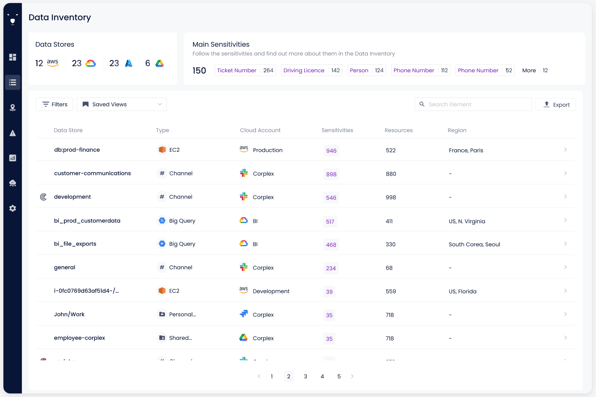
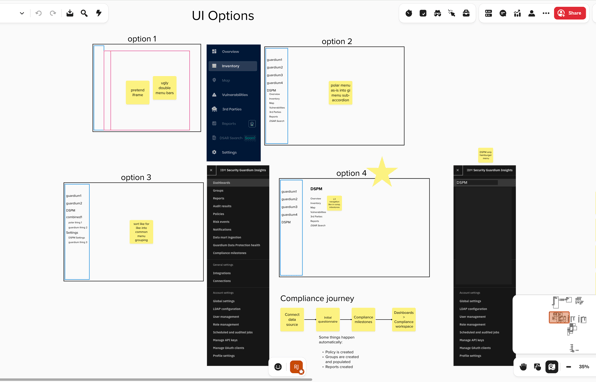
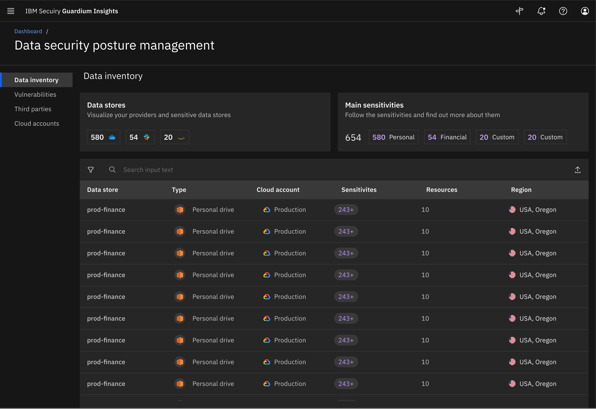





Case study #3 - Launching an all-new design squad
I empowered a new squad of 4 designers, all new to the product and with varying levels of work experience, to deliver a huge initiative related to a common platform service called edge gateways. Acting as the interim design lead, I modeled collaboration, time management, and a culture of quick feedback and iteration. The squad delivered an on-time MVP design deliverable in under 3 months that dramatically improved the existing user experience and has already received great feedback from customers and sellers.
Before kicking off the project, I created a design project brief that gave the design squad a structure and timeline to work from, with expected deliverables at each phase of the project:
Understand: Competitive audit, content audit, questions & assumptions
Explore: To-be scenario, user flows, low and mid-fi wireframes
User testing: Research plan, research synthesis
Deliver: High fidelity designs, redlines
